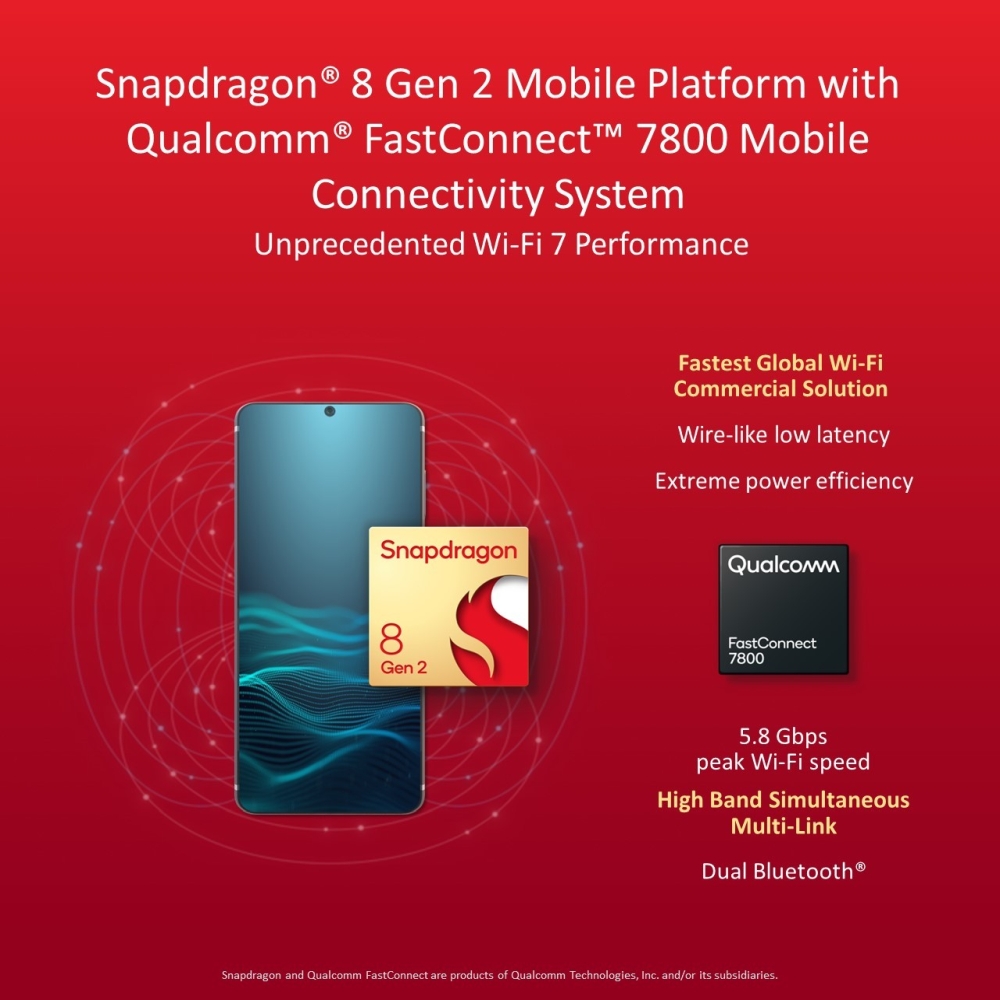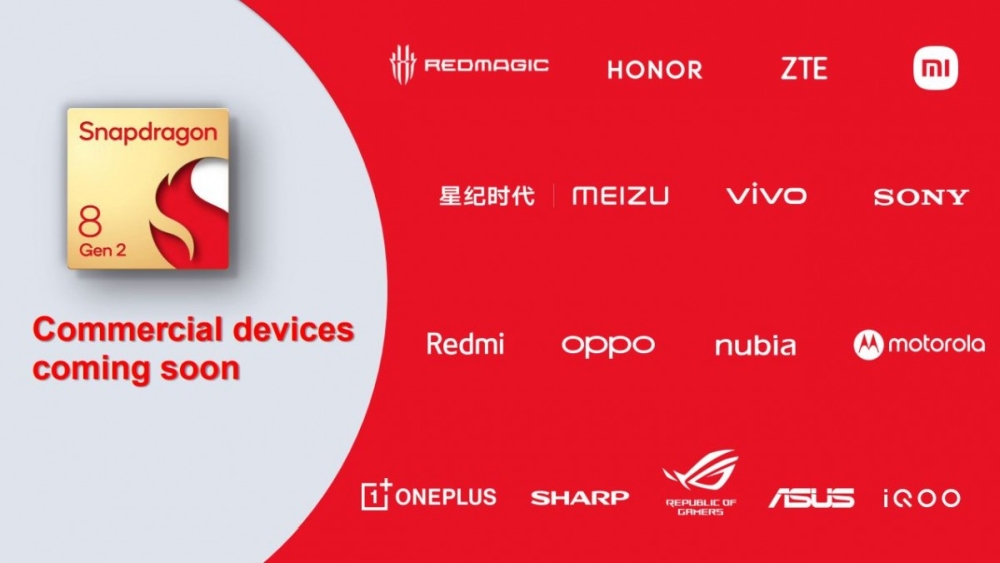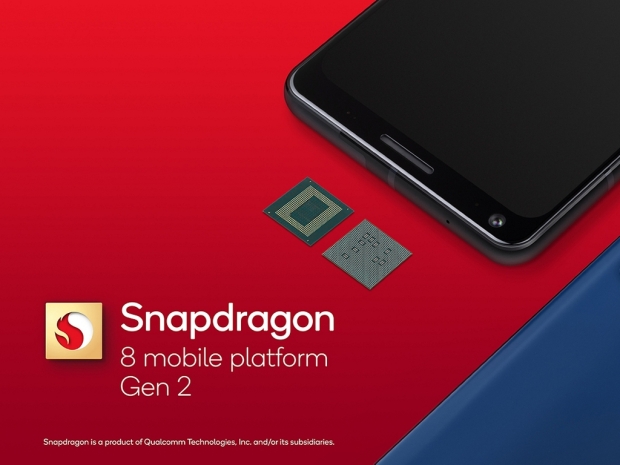As expected, all major players are expected to adopt the new flagship Snapdragon 8 Gen 2 mobile platform including ASUS Republic of Gamers, HONOR, iQOO, Motorola, nubia, OnePlus, OPPO, REDMAGIC, Redmi, SHARP, Sony Corporation, vivo, Xiaomi, XINGJI/MEIZU, and ZTE, and the first commercial devices are expected by the end of 2022.
Interestingly, Samsung is not on the list even though there have been rumors and information that the Galaxy S23 series will be exclusively powered by Qualcomm's latest Snapdragon 8 Gen 2 chipset.
"We are passionate about enabling people to do more, so we design Snapdragon with the user at the center. Snapdragon 8 Gen 2, will revolutionize the landscape of flagship smartphones in 2023,” said Chris Patrick, senior vice president and general manager of mobile handsets, Qualcomm Technologies, Inc. “Snapdragon 8 Gen 2 delivers groundbreaking AI, unparalleled connectivity, and champion-level gameplay, enabling consumers to enhance every experience on their most trusted device.”

Kryo Prime Core for CPU and hardware ray tracing on Adreno GPU
According to Qualcomm, the company has been looking to heavily improve power efficiency, and the latest CPU will bring up to 40 percent better power efficiency, while also delivering up to 35 percent higher performance.
The Snapdragon 8 Gen 2 CPU features a single Kryo Prime core based on ARM Cortex-X3 running at up to 3.2GHz, four Performance cores running at up to 2.8GHz, and three Efficiency cores running at up to 2.0GHz.
The new Adreno GPU was heavily improved, promising up 25 percent higher performance as well as up to 45 percent better power efficiency, which is an impressive boost. The Adreno GPU will also be the first to support Vulkan 1.3 and OpenGL ES 3.2, as well as bring hardware-accelerated ray tracing, so hopefully, we'll see some impressive graphics on mobile gaming soon.
It also gest HDR gaming g (10-bit color depth, Rec. 2020 color gamut), Snapdragon Shadow Denoiser, hardware-accelerated H.265 and VP9 decoder, as well as HDR Playback Codec support for HDR10+, HDR10, HLG, and Dolby Vision.
When it comes to display support, the Snapdragon 8 Gen 2 devices can support up to 4K at 60Hz or QHD at 144Hz, as well as an external display of up to 4K at 60Hz with 10-bit color depth, and HDR10, HDR10+, HDR vivid, and Dolby Vision support.
New AI Engine, Cognitive ISP, and latest connectivity
In addition to improved CPU and GPU, Qualcomm is also improving AI, imaging, and connectivity parts of the SoC, so the new Hexagon Processor promises up to 4.35x faster AI performance, with dual-AI processors for Qualcomm Sensing Hub, support for INT4 precision for 60% better performance/watt, and support for Micro Tile Inferencing.
The new Qualcomm Spectra Image Signal Processor (ISP) is the first Cognitive ISP with triple 18-bit ISPs, with support for up to 36 MP triple camera at 30 FPS with Zero Shutter Lag, ip to 64+36 MP dual camera at 30 FPS with Zero Shutter Lag, or up to single 108 MP camera at 30 FPS with Zero Shutter Lag.
It also supports up to 200-megapixel photo capture with AI-based face detection, auto-focus, and auto-exposure, up to 10-bit color depth photo and video capture, 8K HDR Video Capture at 30 FPS or 4K Video Capture at 120 FPS, as well as slow-motion video capture at 720p at 960 FPS, real-time Semantic Segmentation photo and video processing, Multi-Frame Noise Reduction (MFNR), Pro Sight Video Capture, and more.
Connectivity is based on Snapdragon X70 5G Modem-RF system with support for 5G mmWave and sub-6 GHz, standalone (SA) and non-standalone (NSA) modes, standalone mmWave and mmWave-sub6 dual connectivity, FDD, TDD. It has several Qualcomm-exclusive features like 5G AI Suite, AI-Enhanced Signal Boost, 5G PowerSave Gen 3, and more. It peaks at up to 10Gbps downlink and up to 3.5Gbps uplink speeds.

The connectivity also includes the Qualcomm FastConnect 7800 system, with Wi-Fi 7, peaking at 5.8Gbps, 2x2 MIMO, MU-MIMO, 4K QAM, and all the usual WiFi security.
Smartphones coming this year
As noted, Qualcomm was keen to note that all major smartphone makers are on board, including Asus, Honor, iQOO, Motorola, nubia, OnePlus, Oppo, Red Magic, Sharp, Sony, vivo, Xiaomi, Meizu, and ZTE, and first smartphones are coming before the end of this year.
As we noted, Samsung was not on the list so it is possible that we'll see some special deal between Qualcomm and Samsung for the Galaxy S23 series, possibly with a somewhat custom SoC.





